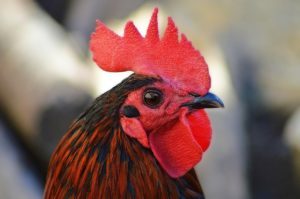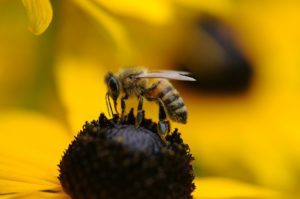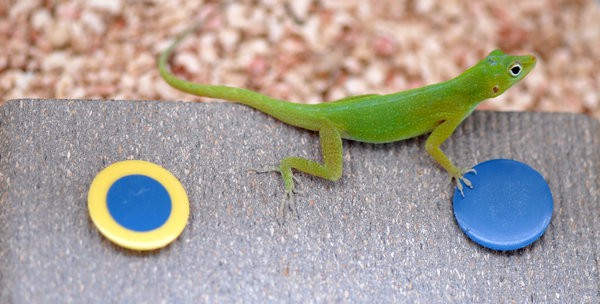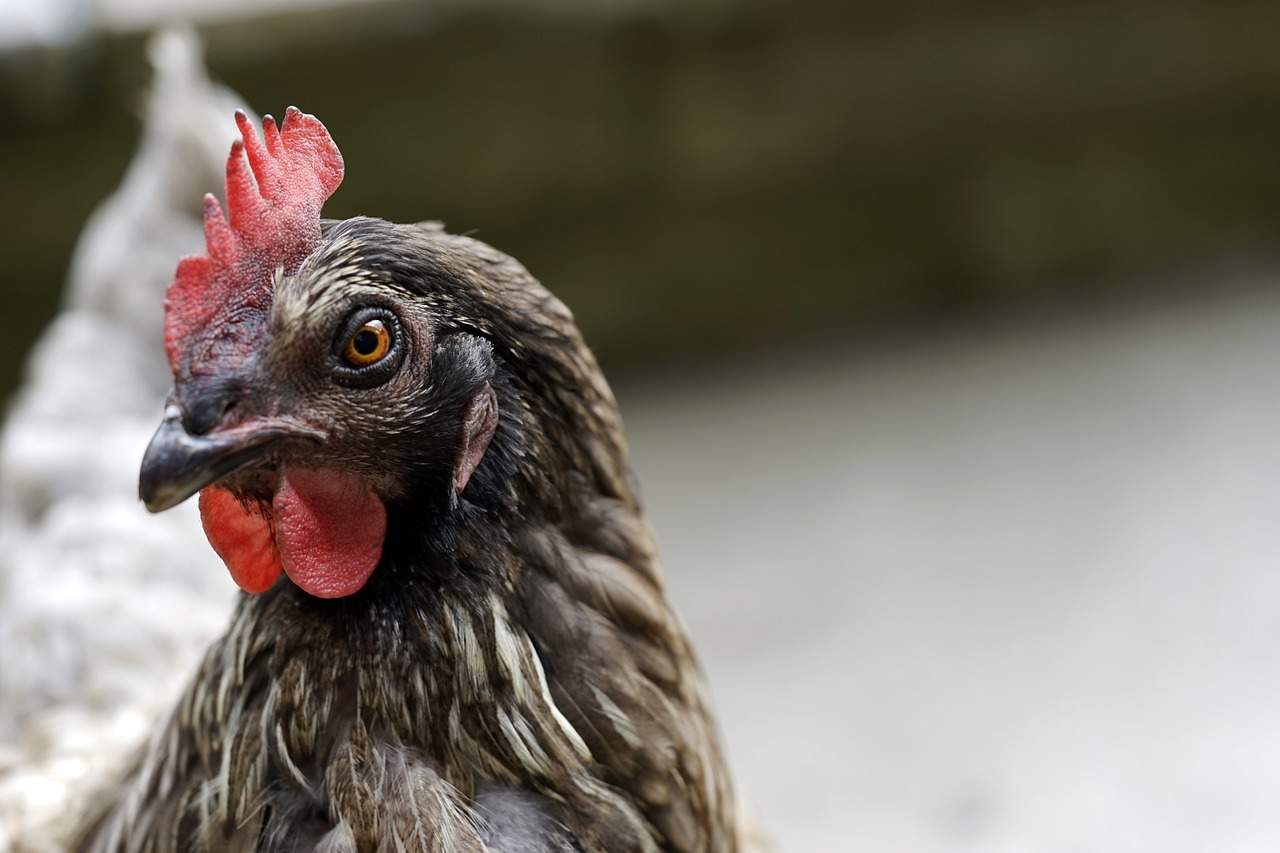When you think of the smartest animals in the world, there are a few species that will always come to mind: crows, dolphins, chimps, and so on. But there are millions of other species out there, and they’re not all dunces. In this post, we show you 5 surprisingly smart animals. A few of these secret geniuses may even be animals you see on an everyday basis.
1 – Chickens
Hardly anyone thinks of chickens as smart animals, but these barnyard birds actually have some impressive intellects.
 “Chickens are the most underestimated animals on the planet. People think they are stupid and automatically respond to things; if there’s food, they eat, if they’re scared, they make a sound. This is not true. Their communications are sophisticated.” – Dr. Carolynne L. Smith1
“Chickens are the most underestimated animals on the planet. People think they are stupid and automatically respond to things; if there’s food, they eat, if they’re scared, they make a sound. This is not true. Their communications are sophisticated.” – Dr. Carolynne L. Smith1
Researchers have identified 24 distinct calls that chickens use to communicate with each other.2 Each has a different meaning. For instance, roosters use one particular call to let hens know when they’ve found a well-liked food.
Chickens use special calls to identify different types of predators and sound the alarm. They also employ different strategies for raising alarm calls depending on whether they’ve seen a predator on the ground or in the air. Chickens might even come up with “names” for individual humans, or at least calls that alert the flock to a specific human’s presence.3
“They can signal with remarkable precision about critical events in their world, such as the appearance of a particular type of predator, or the discovery of food. And they are not always truthful. Males attempt to lure hens with deceptive food, calling, but females remember each male’s track record and quickly become skeptical of those that are unreliable.” – Professor Chris Evans4
Additionally, scientists have found that chickens have a “number sense”. They order numbers from left to right, smallest to largest, just like humans do.5 Overall, there are a number of studies shedding light on the impressive intelligence of chickens, and there are bound to be even more in the future since chickens as study subjects are growing in popularity.
2 – Bees
 Given that many scientists still argue whether or not insects are even conscious6, it’s not surprising that most people would not think of any type of bug as intelligent. But research shows that there’s something interesting going on in the brains of bees.
Given that many scientists still argue whether or not insects are even conscious6, it’s not surprising that most people would not think of any type of bug as intelligent. But research shows that there’s something interesting going on in the brains of bees.
Bees live in large colonies which require cooperation to thrive. In order to cooperate effectively, bees need a way to communicate with each other. They seem to have accomplished this through dancing.7
Bee “scouts” that go out in search of places to gather nectar or build a new hive return to their colonies and relay this new information by doing a dance. They “waggle” their hind ends, aligning themselves at certain angles, moving in different patterns, and dancing for varying lengths of time. These nuances convey important details about where a food source or potential hive site is located.
After watching this dance, the scout’s fellow bees have the directions necessary to fly straight to the location described. Though not all bees respond perfectly to the “waggle dance” and scientists are still trying to sort out exactly what is happening in the minds of the bees who watch it, it’s been described as “the most sophisticated example of non-primate communication that we know of”.
In addition to this complex communication ability, bees are also able to distinguish between symmetrical and asymmetrical shapes, as well as recognize different number values.8,9 For brains that are just shy of 1 million neurons, all of these feats are highly noteworthy.
3 – Pigeons
 When it comes to intelligence, pigeons have a dismal reputation. But is this deserved?
When it comes to intelligence, pigeons have a dismal reputation. But is this deserved?
Not really. Pigeons have a long track record of performing well in cognition tests. Scientists have successfully taught pigeons how to count up to 9, to use touch screens to solve complex problems, and to correctly sort pictures into numerous categories.10,11,12 Their outstanding abilities can sometimes equal those of monkeys, and they even show a knack for learning to identify human words.13
Furthermore, pigeons may have the ability of self-recognition. Though they have never been able to pass a traditional mirror test, they have been able to pass a modified version with training.14 It’s possible that untrained pigeons don’t pass the test because they don’t have any natural incentive to touch unusual markings put on their bodies. Pigeons also seem able to distinguish between videos of themselves and videos of other birds.15
4 – Prairie Dogs
 Unless we’re talking about rats, rodents aren’t exactly famous for their smarts either. Yet mounting research shows that prairie dogs may become the next great mascot for rodent intelligence.
Unless we’re talking about rats, rodents aren’t exactly famous for their smarts either. Yet mounting research shows that prairie dogs may become the next great mascot for rodent intelligence.
Like chickens, prairie dogs also seem to use a number of specific calls to communicate with each other.10 Their squeaks and yips are used to create highly detailed descriptions, forming a prairie dog “language” of sorts.
Instead of just making a generic alarm call whenever danger was present, prairie dogs use different calls depending on what they’re seeing. The calls would change depending on variations in size, color, and even the species of animal the prairie dogs were spotting.
“They’re able to describe the colour of clothes the humans are wearing, they’re able to describe the size and shape of humans, even, amazingly, whether a human once appeared with a gun… In one 10th of a second, they say ‘Tall thin human wearing blue shirt walking slowly across the colony.’” – Researcher Con Slobodchikoff
What might be most notable is that researchers believe that this “language” isn’t the same among all prairie dogs. There’s variation among different groups and different species. It’s quite possible, and even likely, that different species of prairie dogs might not understand each other’s calls.
Prairie dogs are highly social animals, living in groups that can number in the thousands. Consequently, efficient communication can significantly improve prairie dog cooperation and survival. There does seem to be a correlation between socializing and greater intelligence in a number of animal species. In fact, complex social lives may create the environmental pressures necessary for higher levels of intelligence to evolve. This could be what sparked the evolution of prairie dog language in the first place.
More research is required to see if there are any other domains in which prairie dogs prove smarter than expected, but their incredible communication abilities earn them a respected place in this list.
5 – Lizards
Last but not least come the lizards. Reptiles in general have been stereotyped as cold-blooded dullards, but new research has made big strides in proving this idea wrong. This is thanks largely in part to a change in methodology.
Until recently, scientists subjecting reptiles to intelligence tests often kept them in conditions that were far too cold17. Since reptiles need warmth for their bodies and minds to be fully active, the heat-deprived test subjects didn’t fare well. This reinforced the idea that reptiles aren’t quick witted.
But more reptile researchers are now accommodating the ectothermic physiologies of their subjects. This has lead to some exciting discoveries.
 Research has revealed that anoles are very good at solving new problems.18 They even manage to perform better on some tests than other animals who are generally regarded as intellectually superior. Anoles proved that they could figure out how to remove caps from containers that held food. Furthermore, the anoles used two different methods to open the containers. This shows that the little lizards are flexible problem-solvers and can come up with solutions quickly.
Research has revealed that anoles are very good at solving new problems.18 They even manage to perform better on some tests than other animals who are generally regarded as intellectually superior. Anoles proved that they could figure out how to remove caps from containers that held food. Furthermore, the anoles used two different methods to open the containers. This shows that the little lizards are flexible problem-solvers and can come up with solutions quickly.
Black-throated monitor lizards are skilled at finding ways to reach inaccessible food.19 These lizards only needed 10 minutes to figure out how to open the hinged doors of tubes that contained prey. With every test thereafter, they just got faster.
Additionally, lizards can learn new skills by watching and imitating others.20 This ability was once thought to only be capable of humans and a few other primates, but a study of bearded dragons provided the first evidence that reptiles can do it too.
In one study, bearded dragons were made to watch another lizard access food by sliding a door open. The bearded dragons were then put in the same situation. All of the bearded dragons followed the other lizard’s example – they successfully slid the door open to get to the food on the other side.
Conclusion
Indeed, these five aren’t the most intelligent animals on the planet, at least as far as we currently know. But it’s without a doubt that their impressive intelligences have been sorely underestimated. To discover more surprisingly smart animals, check out our other articles and keep an eye out for additional lists.
This article was written by Amanda Pachniewska, founder & editor of Animal Cognition.
Sources
1 – Chicken Intelligence Research Reaps Reward
Macquaire University
2 – Carolynn L. Smith, Jane Johnson
The Chicken Challenge: What Contemporary Studies of Fowl Mean for Science and Ethics
Between the Species
3 – Melissa Caughey
I Have a Chicken Name
Tilly’s Nest
4 – Chris Evans
The Science Show – Communication in Chickens
ABC
5 – Rosa Rugani, et al.
Ratio abstraction over discrete magnitudes by newly hatched domestic chicks (Gallus gallus)
Scientific Reports
6 – Andrew B. Baron, Colin Klein
What insects can tell us about the origins of consciousness
Proceedings of the National Academy of Sciences of the United States of America (PNAS)
7 – J. R. Riley, U. Greggers, et al.
The flight paths of honey bees recruited with the waggle dance
Nature
8 – Martin Giurfa, Birgit Eichmann, Randolf Menzel
Symmetry Perception in an Insect
Nature
9 – Mario Pahl, Aung Si, Shaowu Zhang
Numerical cognition in bees and other insects
Frontiers in Psychology
10 – Damian Scarf, Harlene Hayne, Michael Colombo
Pigeons on Par with Primates in Numerical Competence
Science
11 – Edward A. Wasserman, Yasuo Nagasaka, Leyre Castro, Stephen J. Brzykcy
Pigeons learn virtual patterned-string problems in a computerized touch screen environment
Animal Cognition
12 – Edward A. Wasserman, Daniel I. Brooks, Bob McMurray
Pigeons acquire multiple categories in parallel via associative learning: A parallel to human word learning?
Cognition
13 – Damian Scarf, et al.
Orthographic processing in pigeons (Columba livia)
PNAS
14 – Robert W. Allan, James S. DeLabar, Claudia Drossel
Mirror Use in Pigeons
Lafayette College
15 – Koji Toda, Shigeru Watanabe
Discrimination of moving video images of self by pigeons (Columba livia)
Animal Cognition
16 – C.N. Slobodchikoff, William Briggs, Patricia A. Dennis
Decoding the information contained in the alarm calls of Gunnison prairie dogs.
The Journal of the Acoustical Society of America
17 – Emily Anthes
Coldblooded Does Not Mean Stupid
The New York Times
18 – Manuel S. Leal, Brian J. Powell
Behavioral Flexibility and Problem-Solving in a Tropical Lizard
Biology Letters
19 – Jennifer D. Manrod, et al.
Rapid Solving of a Problem Apparatus by Juvenile Black-Throated Monitor Lizards (Varanus albigularis albigularis)
Animal Cognition
20 – Anna Kis, Ludwig Huber, Anna Wilkinson
Social learning by imitation in a reptile (Pogona vitticeps)
Animal Cognition


